The village of Leonora is located on the West Coast of Demerara, in Region Three (3) Essequibo Islands-West Demerara. Leonora is one of the largest and most developed villages on the coast, about thirteen (13) square kilometres, stretching across acres of sugar estate, and residential areas. On either side of this vibrant village, lies the neighbouring villages of Anna Catherina and Stewartville. North of Leonora is the vast Atlantic Ocean while the village extends as far as the West Demerara Water Conservancy in the South. Leonora or Plantation Leonora as it was called, comprises of several sections such as Pasture, Sea Field, Para Field, Groenveldt and Sea Spray.
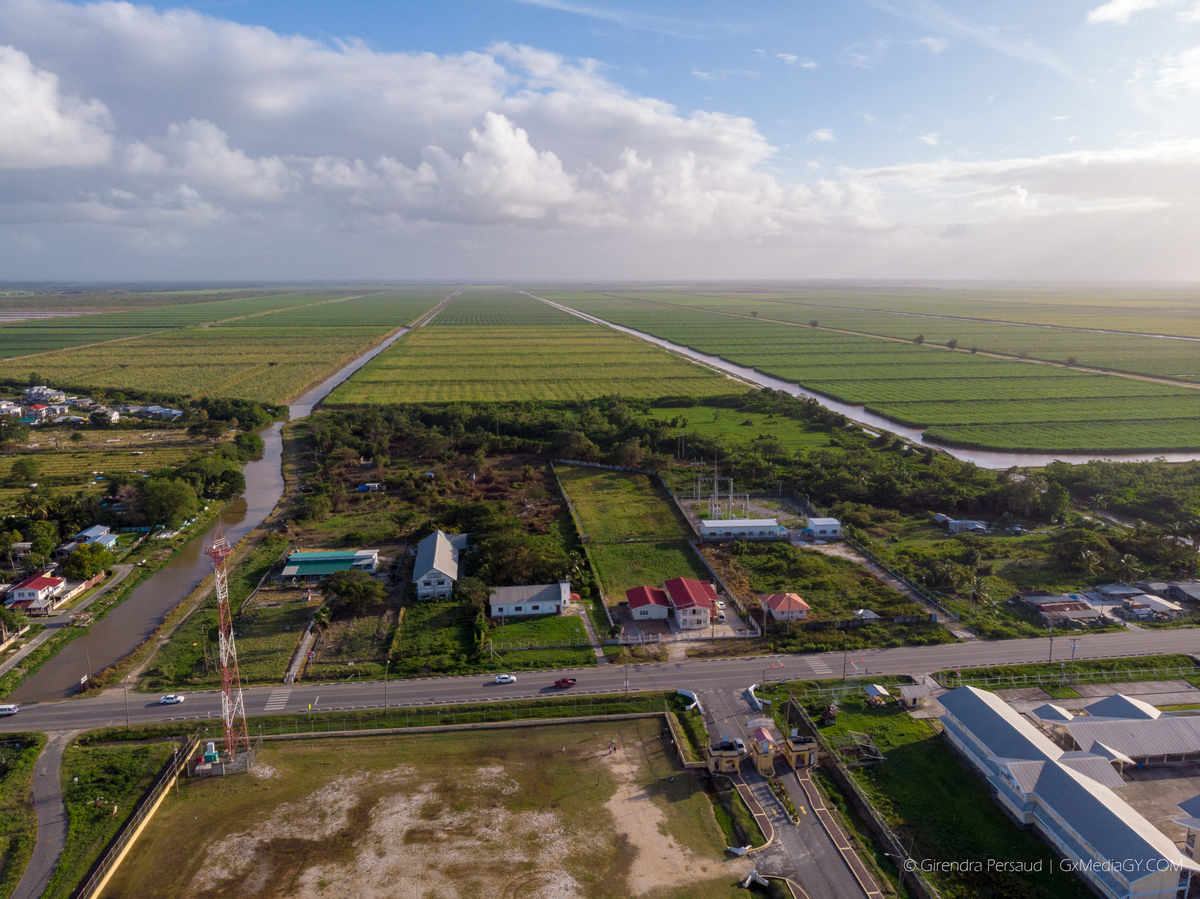
Leonora Village – Photo by Girendra Persaud
History of Leonora
Leonora was named after two Dutch children by the names of Leo and Nora. Leonora was formerly known as Plantation Leonora, named after the humongous sugar plantation of about eight thousand acres. These sugar plantations were the foundation on which the Leonora village was built. Leonora had indentured labourers of all descents living on the estates including people from Calcutta, Madras, China, Africa and Madeira. The majority of these people later moved on to neighbouring villages, but those of Indian descent lingered, making Leonora a predominantly Indian village that embodies their culture.
The management and proprietors of the Leonora Sugar Estate changed several times over the year until its closure in 1986. This includes ownership by George Rainey, the Sandbach Parker and Company, and Jessel both British companies. Leonora housed an estate manager compound, with a three-story, Administrative Manager house. It also provided accommodation for other managers and the overseers. The compound was constructed near to the factory so that the managers would be able to address any immediate issues in the factory. Next to the sugar factory, a hospital was built in 1868.
The workers of Leonora sugar estates endured atrocious conditions like having to drink impure, canal water, long working hours and latrines built across trenches that both men and women shared. With the increase of dwellers, the situation only became worse. Together trade unions and political leaders like the late President Dr. Cheddi Jagan fought against the horrendous ordeal of the estate workers. It was around this time in 1964, a woman by the name of Kowsilla was ploughed through by a tractor driven on the orders of colonial managers. If you were to pass Leonora’s turn, you will find a signboard with her picture in honour of her sacrifice in the struggle for trade union recognition in Guyana. Eventually, the estate was taken over by Guyana’s government but is now out of commission. Those who laboured on the estates had to seek work at nearby plantations.
There was a train station in the early 1960s which was a hub for travel and the transportation of goods. The train station housed a bond where goods bought in Georgetown were store and uplifted after showing the postmaster their bill. Many people travelled in the Tata buses or by train or walked. Leonora is rich in history and culture that is influenced by all the diverse ethnic groups living in the village.
Interesting Tip
- The village was also part of the Parish of St. Luke.
Infrastructure
Logies were the main part of Leonora’s infrastructure in its earliest days. However, over the years they have deteriorated and as a result, there is none left standing today. The majority of Leonora’s population lived on the sugar estate in the logies, the only housing provided to the indentured labourers who came to Guyana in search of employment. For the planters, having the indentured labourers living on the plantation ensured they got the most of their coin by having them work from dawn to dusk. These logies were divided into rooms and so the labourers lived close to each other forming a brotherly atmosphere that the planters sought. Some of the logies occupied the area behind the currently situated Leonora market. This area was called the Madras Quarters because a lot of the labourers were of the Indian descent. Now, there are many people occupying the Madras Quarters regardless of descent, like any other part in the village.
The village of Leonora has all the amenities and facilities required of a small town. You can find educational institutions such as the Leonora Primary School-one of the top primary schools on the West Coast,-the Leonora Secondary School, as well as the Leonora Technical and Vocational Training Centre. Next to the high school, is the National Track and Field Facility where athletes from all over the country gather to compete. The Leonora Cottage Hospital which is run by the government provides healthcare to its citizens and those of the surrounding communities. Leonora has its own Post Office and had a cinema called the Roxy Cinema. There are also several places of worships including masjids, temples and mosques. The police station, a Muslim mosque and a Hindu temple are some of the oldest structures in the village, still standing from colonial days. One of Leonora’s old sugar estates was recently made into a housing scheme, but the historical significance of the estate was not forgotten. Perhaps the most famous part of the village is the dynamic Leonora Market. This market used to be held six days a week in the olden days but is now only held on Saturdays, attracting both buyers and vendors across the West Coast.
Economic Activities of Leonora
Leonora was a hub of activities in the olden days and has become even more so. The Leonora sugar plantations were the main sources of employment in this bustling village. It not only provided employment for its villagers but for people in the nearby villages. After the sugar plantation was closed in December 1986, persons looked to other areas in search of employment. Some rice farming done on the plots while some were converted to pastures and cash crop farming.
Now, there are small businesses that dot the landscape of this village, ranging from modern supermarkets to small shops and stores, salons, boutiques, taxi services and even an ice cream parlour. There are furniture stores, immigration offices, and a very popular photo studio. Many of its villagers work in offices in Georgetown and on the West Coast but some still work on the estates. Parents tend to encourage their children to complete or continue their education as they see this is a way of progress. Thanks to the Leonora Technical and Vocational Training Centre there is a small number of unemployed in the village.
Life in Leonora
Life in Leonora is very peaceful. In the morning, you will find everyone preparing for school and work. If you happen to be passing Leonora, you will see persons lined off on either side of the road, waiting for public transportation. During the day it gets a little quiet but picks up as the day ages. After school hours you can be sure to find youths from Leonora and surrounding village practising their football, cricket or basketball skills at the National Track and Field Facility. You can find the men under two trees, Sweetie Tree and Cork Tree which are dubbed the trees of knowledge. In the evenings, elders would gather to “gyaff” or chat about the happenings of the community. More often than not, nancy tales about moongazer, ole higue and jumbies alike were shared until the night sky. People were warned against being near the silk-cotton trees because Dutchman spirits tend to roam in the night. Even now, many persons would gather under these trees or hang out by the seawall and chat.
- Leonora Village – Photo by Girendra Persaud
- The National Track and Field Facility – Photo by Girendra Persaud
- Market Day Scenes at Leonora Market – Photo by Girendra Persaud
- Market Day Scenes at Leonora Market – Photo by Girendra Persaud
- Plantation Leonora – Photo by Girendra Persaud
- Plantation Leonora – Photo by Girendra Persaud
- Plantation Leonora – Photo by Girendra Persaud
- Market Day Scenes at Leonora Market – Photo by Girendra Persaud
- Leonora Market
- Market Day Scenes at Leonora Market – Photo by Girendra Persaud
About Leonora
This village is one of the most dynamic on the West Coast and a hub for business and socializing. Like any village in the countryside of Guyana, Leonora is bubbling with potential. Take a visit to Leonora and take in the green plantation that stretches as far as the eye can see. Chat with the friendly residents and pose for photos at the National Track and Field Facility. You can be sure to find anything you need in the numerous small businesses make up its landscape. While little physical evidence of the remnants of our colonial history lingers, Leonora is a village seeping with stories of the past. The village has not lost its essence and will no doubt continue to progress.
Article References
- https://en.wikipedia.org/wiki/Leonora,_Guyana
- http://guyanachronicle.com/2014/05/10/leonora
- https://guyanatimesgy.com/leonora-a-village-on-the-rise/

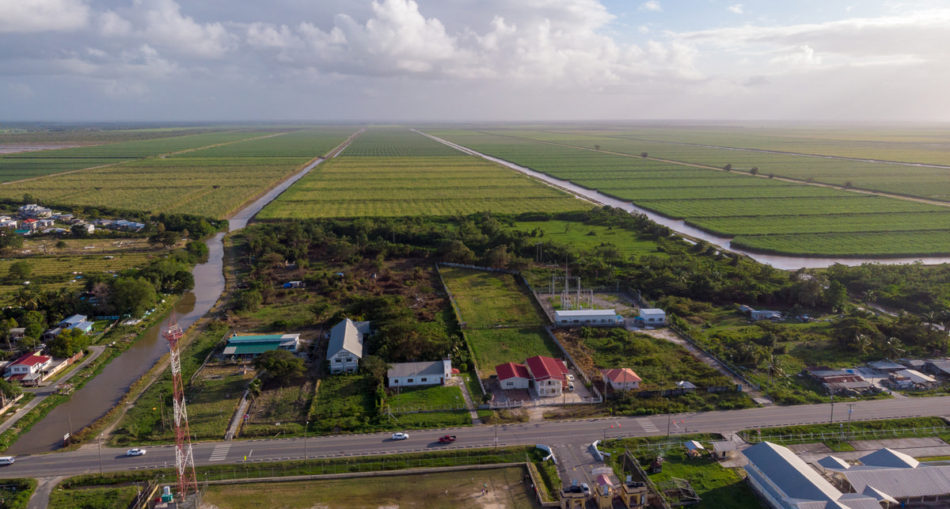
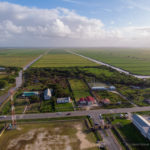
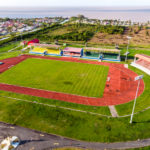
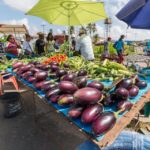
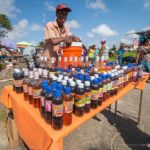
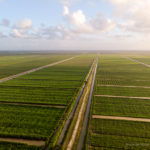
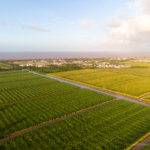
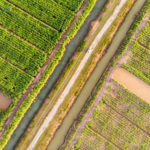
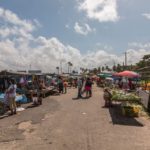
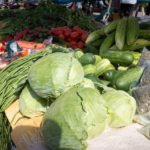
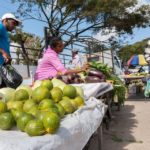


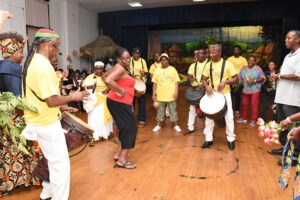
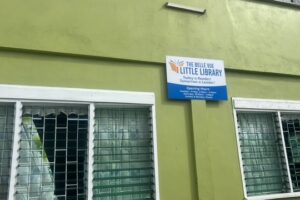

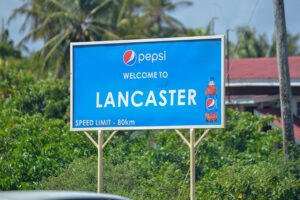
1 Comment
Pingback: The Extraordinary Story Of An Ordinary Woman Who Became A Historical Heroine: Kowsilla - Things Guyana